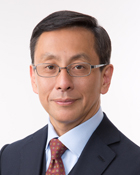What is an activist shareholder in Toshiba’s scandal?
On June 10, 2021, an investigation report by external lawyers revealed that Toshiba had encouraged the Ministry of Economy, Trade and Industry Japan (METI) to impose pressure on activist shareholders, and then the shareholders voted down the reappointment of the board chairman and others at the shareholders meeting in the end of this June. The report also disclosed that oversea media reported a then-advisor to METI, at a proxy fight in Toshibaʼs shareholder meeting, had contacted and required a Harvard University endowment fund not to oppose the companyʼs personnel proposal. Based on these, media have reported activist shareholders as if they were heroes and public opinion saying they are right, has been also shaped. But, are these analyses and news correct?
The beginning of this issue goes back to 2006. Toshiba won a bid and bought Westinghouse Electric Company, an American nuclear power company for diversification of business. The announcement of financial statements of third quarter of 2016 was postponed on the day due to the disclosure of Westinghouse ʼs off-the-book liabilities of around 625.3 billion yen, and Toshiba had business difficulties and in 2017 financed 600 billion yen through third party allotment to avoid being delisted. As a result, around 25 % of Toshibaʼs investors became active shareholders and they have required large dividends and acceptance of management team.
What is a fund (Investment Limited Partnership) including activist shareholders at all? At first, they establish a fund operating company and form a fund. At the same time, they promise Internal Rate of Return (20 to 30 % in general) to investors and induce them to invest in their fund. Next, while a fund buys a company and hold its stock for a certain period (often for five years), it lays off employees and takes other cost-cutting measures, asset sales and resales of acquired companies to third parties. By the way, assuming Internal Rate of Return is 25%, 100 yen which is invested in a fund, can be increased to 244 yen in five years. In fact, a fund borrows money from banking facilities, that is called as leveraging, and makes an acquisition to decrease earning rate. However, investorsʼ capital can be always increased by around 2.5 times.



